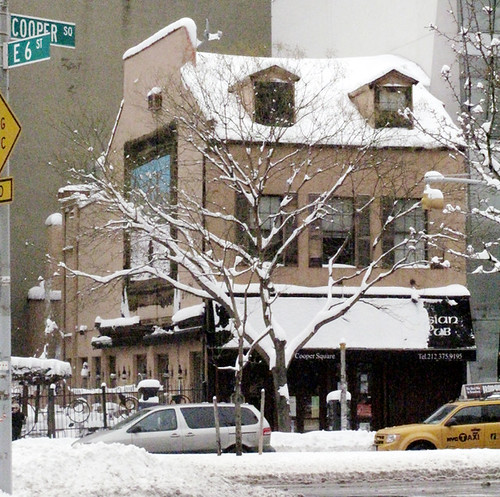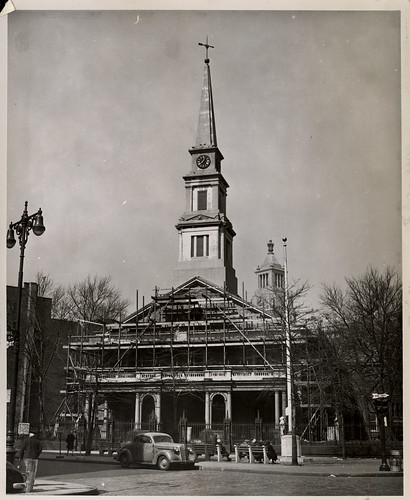A day after preservationists held a vigil for the demolished 35 Cooper Square, The Local takes a look back at the historic building with archival photographs provided by David Mulkins of the Bowery Alliance of Neighbors, one of the leaders of the campaign to maintain the building.
LOOKING BACK
Looking Back | St. Mark’s Church
By TIM SCHREIERTim Schreier on the cultural and historical significance of St. Mark’s Church.
“I had always known about St. Mark’s Church from the perspective of its involvement in racial harmony, anti-Vietnam War, poetry, dance and the arts in general. Having spent some time with Roger Walters, the history curator of the church was an eye-opening experience. I learned so much from Roger about St. Mark’s role in the community, its deep-rooted history, the cause and effect elements of decisions made at the church about invoking the arts into the practice of worship. Some of the things we New Yorkers take for granted or go unnoticed are actually quite remarkable in a historical perspective.”
Read more…
Looking Back | 20 St. Marks Place
By RACHEL SLAFFThis post was reported by NYU Journalism’s Rachel Slaff, Todd Olmstead and Nasry Esmat. It was written by Ms. Slaff.
Yoga studios. Frozen yogurt stores. Tattoo parlors. Knock-off Ray-Bans, colorful socks and bubble tea – all for sale. Tourists swarm by pizza shops; college students flick cigarette butts onto the street. It’s loud, it’s crowded. It’s every possible cliche of the East Village, packed onto a block. This is St. Marks Place.
But fast food and neon lights haven’t always epitomized this street. Building No. 20, between Second and Third Avenues, has seen St. Marks Place change drastically over more than two centuries. This rowhouse traces its lineage back to wealthy descendants of the Stuyvesants, yet it also watched Warhol cavort through the Village. It witnessed the aftershock of a horrific peacetime maritime disaster. It has been home to soldiers and storeowners and has housed a dress shop, a carpentry workshop and a record store. No. 20 is a historical hold-out, an architectural remnant of times long forgotten in the East Village.
The metal plaque from the New York Community Trust that is affixed to No. 20’s facade notes that the address has landmark status for its late-Federal style architecture. But the ornament is not large or flashy enough to draw much attention – it is as if the building wants to be left alone. The plain signs of the businesses on its first two floors are a muted counterpoint to the sensory overload that the rest of the block exudes. The building’s iron railing is decrepit, its brick facade unremarkable, and yet, the limestone molding on the door hints at a meaningful history.
Read more…






